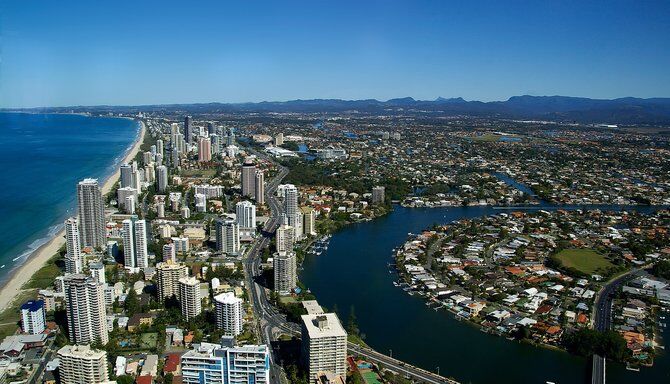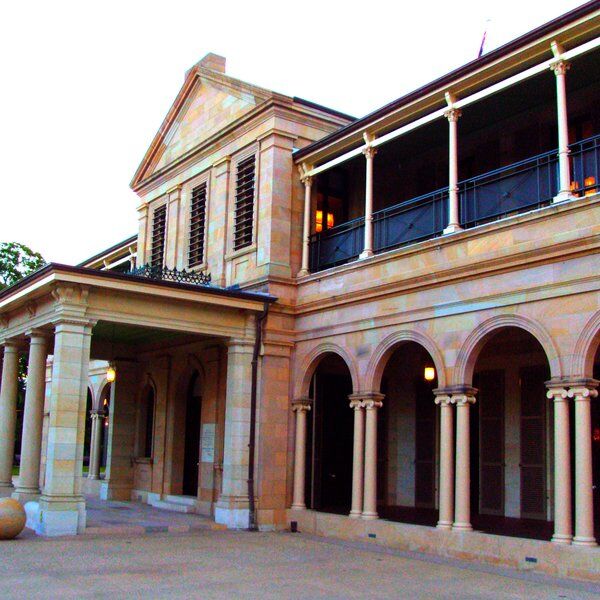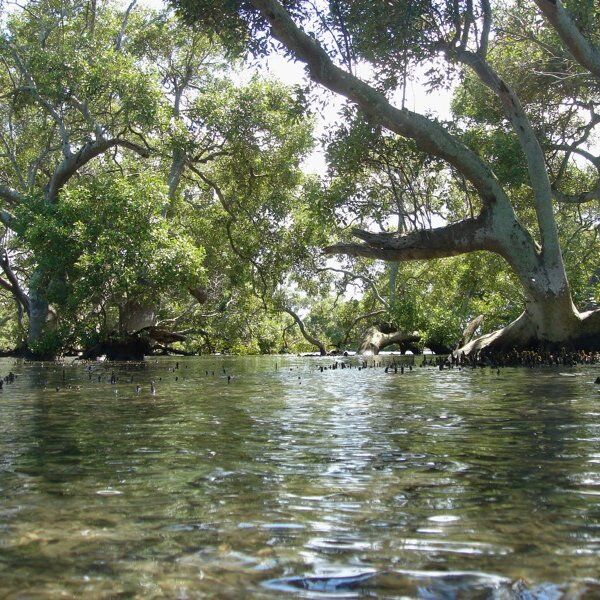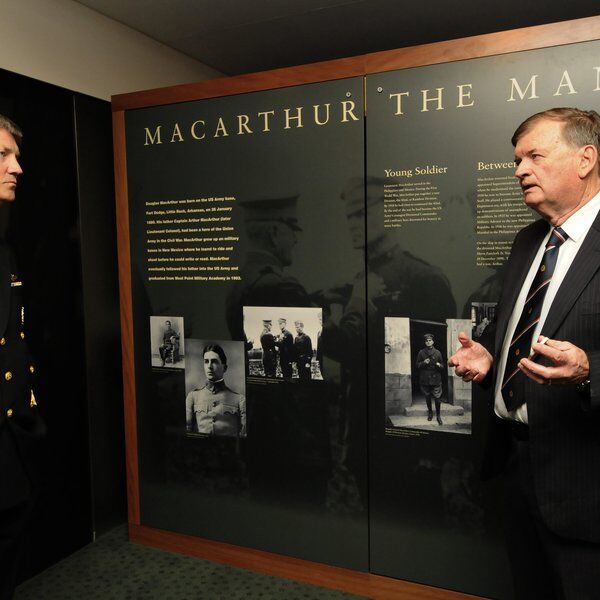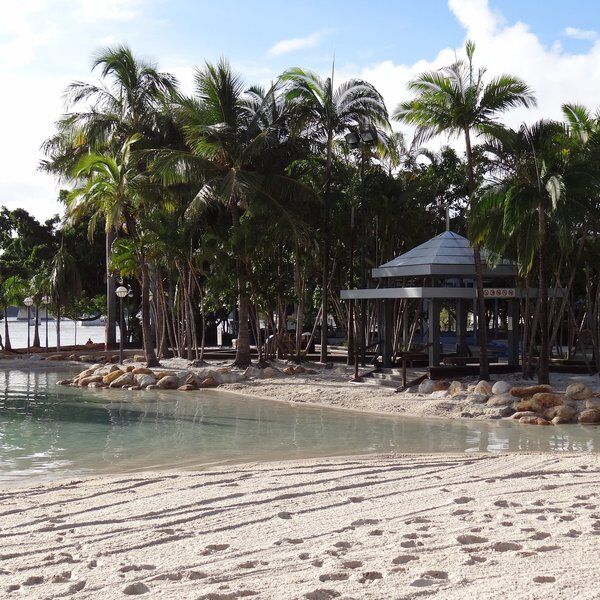Hope Island: A Secret Paradise
Nestled in the picturesque Moreton Bay, just off the Northern coast of Brisbane, lies the golfing and boating mecca; Hope Island. This enchanting Gold Coast island offers an escape from the busy city and invites visitors to immerse themselves in its natural beauty. Known for its mesmerising landscapes, abundant wildlife, luxurious residential communities, and world-class golf courses, Hope Island is a true paradise for nature lovers and those seeking a quiet corner to unwind.
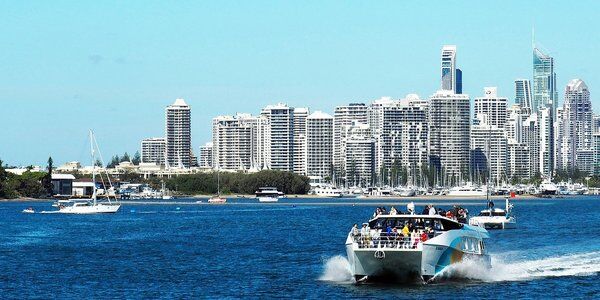
Luxurious Living on Hope Island
“Sanctuary Cove was far ahead of its time and really put Hope Island on the international map.”
Imagine waking up to the sound of gentle waves, enjoying a cup of coffee while looking out over the crystal waters, and immersing yourself in the serenity of this island paradise. Because some people actually do!
After originally serving as farm land, Hope Island became a major-land development location, after the high flood risk was addressed. The first development initiative was through Mike Gore’s Sanctuary Cove Resort Act 1985. Since then Sanctuary Cove and Hope Island Resort are two resorts, which really put Hope Island on the map. Today, they boast some of the most luxurious (and costly!) property on the Gold Coast causing a large proportion of the demographic to be retirees and international second home-owners.
“I wouldn’t live anywhere else. Residents get the benefit of being close to Surfers Paradise and the beach, but are far enough away from the hustle and bustle of the Glitter Strip.”
Hope Island Marina Shopping Village is a waterfront, open-air shopping and dining district located on the Hope Island Resort Marina, which has deep water berths for super yachts as well as regular moorings. There are also three world-class golf courses nearby; Palm Island golf course adjoins Sanctuary Cove and The Pines and Links Hope Island are part of Hope Island Resort. Residents even use golf buggies to get from A to B – every aspect of Hope Island oozed luxury living. However, in recent years the picture has begun to change with young families increasingly drawn to the affordable townhouses that have started to spring up.

The History of Hope Island
Whilst the island's modern development makes it a sought-after destination for those seeking an upscale lifestyle in top resorts like Sanctuary Cove, it also has a captivating history that spans centuries. From its indigenous roots to its transformation into a modern-day paradise, Hope Island has undergone remarkable changes, leaving a legacy of hope and beauty.
Indigenous History
Prior to European settlement in the area, Hope Island was home to the Indigenous Eastern Kuku Yalanji people, who referred to the island as Boykambil. These Indigenous Australians had lived in the region for thousands of years and had a deep connection to the land and waterways. Today, many of these peoples reside at Wujal Wujal Aboriginal Community on the Bloomfield River and continue to roam the area, hunting, fishing, and foraging.
European Settlement
Captain the Honourable Louis Hope, after whom the island was likely named, was a colonial aristocrat who arrived in Moreton Bay in 1848. Over the next two decades, Hope contributed to the development of the sugar plantations on the edge of Moreton Bay. Realising the potential of the island's agricultural prospects he introduced advanced farming techniques, including the use of steam-powered machinery for processing sugar cane. In recognition of his efforts in Queensland’s early sugar industry, Hope was granted 1,800 acres – Hope Island – at the mouth of the Coomera River in 1867. Today, remnants of the old sugar mill, part of the Rockholm plantation, can still be seen on the island.
Evolution into a Residential Area
Hope Island's history took a significant turn with the arrival of European settlers in the 19th century. Once the Europeans arrived, farms and homesteads were established on Hope Island and in the surrounding areas. The fertile land and easy water access made it an attractive location for agriculture and grazing. This era marked the beginning of the island's transformation and laid the foundation for its future development. In 1925, the construction of the Hope Island Bridge commenced, connecting the island to the mainland and opening up opportunities for further growth and development.
After the bridge’s completion in 1926, the agricultural landscape of Hope Island gradually transformed into a more residential area. By the late 20th century, the island had become a sought-after location for residential development, offering a mix of waterfront properties, gated communities, and golf course estates. Today, Hope Island is a thriving suburb of Brisbane, and has even in recent years become a pivotal family-friendly destination for prospective residents and visitors alike.
Naming Hope Island
Despite some claiming that the islands were named after Captain the Honourable Louis Hope, others believe that they came by the name through a different means. In 1770, James Cook, Lieutenant of the Endeavour, struck the reef that now bears the same name, and started taking in water. In a journal it is documented that they passed “two small low islands.” Cook went on to claim: “I have named them Hope Islands, because we were always in hope of being able to reach these islands.” In this regard Hope Island gave strength to a desperate situation, reconciling with the notion that they represent a legacy of resilience and hope.
Preserving History
As the area has developed, efforts have been made to preserve its heritage and natural beauty. Several historical sites, including remnants of the old sugar plantation and other historical landmarks, have been preserved as a reminder of Hope Island's past.
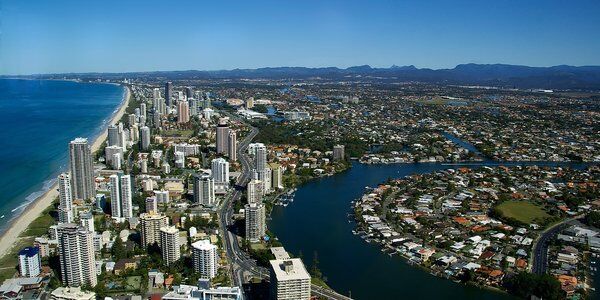
Hope Island: Geology and Landform
In 1983, Hope Island was recognised as part of the Great Barrier Reef Marine Park, which was established on July 1st 1983 following the Great Barrier Reef Marine Park Act 1975. Hope Island actually consists of two islands: East Hope and West Hope that cover approximately 350 hectares. They exist on two different reefs and are separated by a deep channel. Together they act as a protective buffer along the Queensland coast.
Barrier Island Formation
Hope Island is also part of the larger South Stradbroke Island group, which includes several barrier islands along Queensland's coastline. Barrier islands are dynamic landforms that form parallel to the mainland and serve as a protective buffer against the ocean's waves and storms. Over time, sediments carried by coastal currents accumulate and build up, eventually forming these elongated and slender landforms.
Mangrove Ecosystems
Along the Northern and Western shores of West Hope Island, particularly in the intertidal zones, vibrant mangrove ecosystems thrive. Mangroves are salt-tolerant trees and shrubs that grow in coastal environments where freshwater and saltwater mix. They play a crucial role in stabilising shorelines, providing habitat for various marine species, and filtering pollutants from the water.
Urban Development and Canals
In recent decades, the development of Hope Island and the surrounding areas has led to the creation of man-made canals and waterways. In fact, at approximately 4.2 kilometres long and 100m wide, Hope Island is the largest man-made canal in Gold Coast Australia. Dotted with waterfront housing and shopping complexes, these canals provide a unique and picturesque marina for residents, boosting the island's identity as an attractive residential destination.
Beaches at Hope Island
Hope Island is part of a protected marine area, and typically visitors can explore the surrounding waters by booking onto snorkelling, diving, or guided boat tours to witness the vibrant coral formations and marine biodiversity. While there may be small sandy areas along the shoreline, the primary focus of tourism and exploration in the Hope Islands is centred around the marine environment and there are no actual beaches. The closest beach on the Broadwater is Paradise Point, which also has an area for swimming.
Preserving the Environment
Despite modern development, efforts have been made to preserve and protect the island's unique geological features as well as its natural beauty. Conservation initiatives seek to safeguard important wildlife habitats, and maintain the balance between urbanisation and ecological sustainability. Ensuring that the area remains unspoiled allows for a greater appreciation of the island. As you explore the island, remember to practise responsible tourism, respecting the delicate balance of the environment and leaving no trace behind.

Hope Island: Outdoor Exploration and Wildlife Encounters
There are a range of opportunities for outdoor exploration at Hope Island that visitors can enjoy:
Snorkeling and Diving
Snorkelling and diving are popular activities, allowing visitors to get up close to the diverse underwater ecosystem, including colourful coral formations, tropical fish, and other marine creatures.
Boat Tours and Camping Opportunities
Joining a guided boat tour or cruise is a fantastic way to explore the islands and nearby reefs. These tours often provide opportunities for wildlife spotting, including dolphins, turtles, and the various bird species that inhabit the area.
The Hope Islands are part of the larger Hope Island group, which includes other islands such as South Stradbroke Island. So you could also consider booking an island hopping trip to explore different areas, each with their own charm and recreational opportunities. For example, South Stradbroke Island offers camping opportunities for those seeking a more immersive experience. Camping on the island allows you to fully appreciate the natural beauty and peaceful atmosphere of the Great Barrier Reef region.
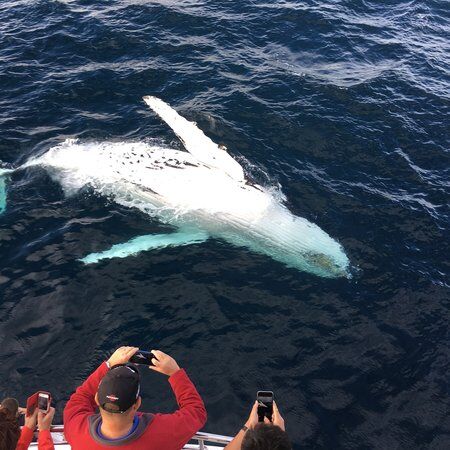
Kayaking and Paddleboarding
Renting a kayak or paddleboard offers a peaceful and eco-friendly way to explore the waters around the islands. Paddle through the calm waters, taking in the scenic beauty and observing the marine life from the surface.
Picnicking and Relaxing
There are several coastal trails across the islands and along these trails are designated picnic spots. It's the perfect opportunity to relax and enjoy a bite to eat after a nice hike, surrounded by nature.
Wildlife Watching
One of the most captivating aspects of Hope Island is its thriving wildlife; on land, in the water, and in the air. Keep an eye out for kangaroos, wallabies, and other native animals that inhabit the islands. Look to the skies to observe an array of colourful birds – there have been twenty-five species of waterbirds, shorebirds, and migratory species recorded on the Hope Islands – including the Australian pelican, eastern reef egret, the sacred kingfisher and the figbird. And take to the oceans for a glimpse at the dolphins, dugongs, and turtles beneath. All nature enthusiasts will revel in the chance to observe the island's diverse ecosystem and capture stunning photographs of the wildlife in their natural habitat.

Our Thoughts…
Hope Island's history is woven with the threads of indigenous culture, European settlement, and modern-day luxury. From its humble beginnings as a sugar plantation to its current status as a prestigious residential destination, the island has evolved while retaining its natural beauty and charm. The spirit of hope, resilience, and aspiration that defines Hope Island is a reflection of its past and a beacon for the future. As it continues to flourish and captivate the hearts of those who visit or call it home.
Interested in finding more places like this? Why not try one of our CityDays Scavenger Hunts - work as a team to overcome cryptic riddles and discover quirky places off the beaten track in Brisbane and around the world.
